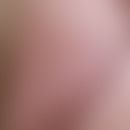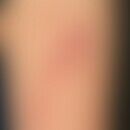Synonym(s)
DefinitionThis section has been translated automatically.
Lauramidopropyl betaine is a lauric acid derivative. The substance is used in cosmetic formulations. It acts as an antistatic agent (reduces static charges by neutralizing the electric charge on the surface of e.g. hair). Furthermore, lauramidopropyl betaine acts as a surfactant (washing-active substance, cleans the body surface), viscosity regulator (increases or decreases the viscosity of cosmetic products) and skin care product.
Note(s)This section has been translated automatically.
The collective term "betaines" is used to describe a group of organic-chemical compounds that carry both a positive and a negative charge in their molecular structure. They thus appear uncharged to the outside. Various betaines are used as surfactants in cosmetic products (see e.g. Decyl betaine).
The eponymous compound of this group of substances, the betaine (in general, glycine betaine is equated with betaine) is a natural compound (found in the sugar beet lat. beta vulgaris; beta=beet), a derivative of the amino acid glycine. Betaine is found in many plants (broccoli, spinach, beet sugar) and some animals (mussels, crabs).



